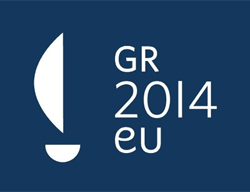Food Safety
The legal basis of the Food Safety policy are Articles 37, 95, 152 and 153 of the Treaty establishing the European Community.
The European Union has put in place a comprehensive strategy to restore people’s belief in the safety of their food “from the farm to the fork”.
There are three pillars to this strategy:
- new legislation on the safety of food and animal feed;
- sound scientific advice on which to base decisions;
- enforcement and control.
Safety of food and animal feed
The general principles of food safety are in a Regulation adopted in 2002 and often known as the General Food Law. Under this law, it became compulsory from 1 January 2005 for food and feed businesses to guarantee that all foodstuffs, animal feed and feed ingredients are traceable right through the food chain.
The General Food Law is supplemented by targeted legislation on a raft of food safety issues, such as use of pesticides, food supplements, colourings, antibiotics and hormones in food production; and by stringent procedures on release, marketing, labelling and traceability of crops and foodstuffs containing genetically modified organisms (GMOs). Updated rules on hygiene come into effect on 1 January 2006. The basic rules apply to all food and feed.
Sound scientific foundations
Science is the essential foundation on which the EU bases its decisions on any part of the food chain. The European Food Safety Authority (EFSA), previously temporarily headquartered in Brussels, but progressively moving to new headquarters in Parma in Italy in 2005, plays a central role in this. EFSA provides the European Commission with independent, scientific advice that is also made public to enable it to be fully open to scrutiny. EFSA provides input when legislation is being drafted and advice when policymakers are dealing with a food scare, like ‘mad cow disease’, dioxin in milk or 'bird flu' in poultry.
Enforcement and control
Inspections are the job of the Commission’s Food & Veterinary Office (FVO) based at Grange in Ireland. The FVO can check individual food production plants, but its main task is to check that EU governments and those of other countries have the necessary machinery for checking that their own food producers are sticking to the safety standards.
New rules taking effect on 1 January 2006 will streamline controls across the EU and put more emphasis on relating checks to likely risk.
Preserving diversityThe EU takes great care in designing the rules to ensure that traditional foods are not forced off the market by its food standards, that the rules leave room for quality improvements, that innovation is not stifled, and that variety and choice are not curtailed.






 Svejo
Svejo Twitter
Twitter Link4e
Link4e Pipe
Pipe Web-bg
Web-bg Bghot
Bghot Lubimi
Lubimi Novinitednes
Novinitednes Ping
Ping Facebook
Facebook Myspace
Myspace Mix
Mix Del.ico.us
Del.ico.us Reddit
Reddit Digg
Digg Stumbleupon
Stumbleupon Myweb Yahoo
Myweb Yahoo Google Bookmarks
Google Bookmarks Google Buzz
Google Buzz

